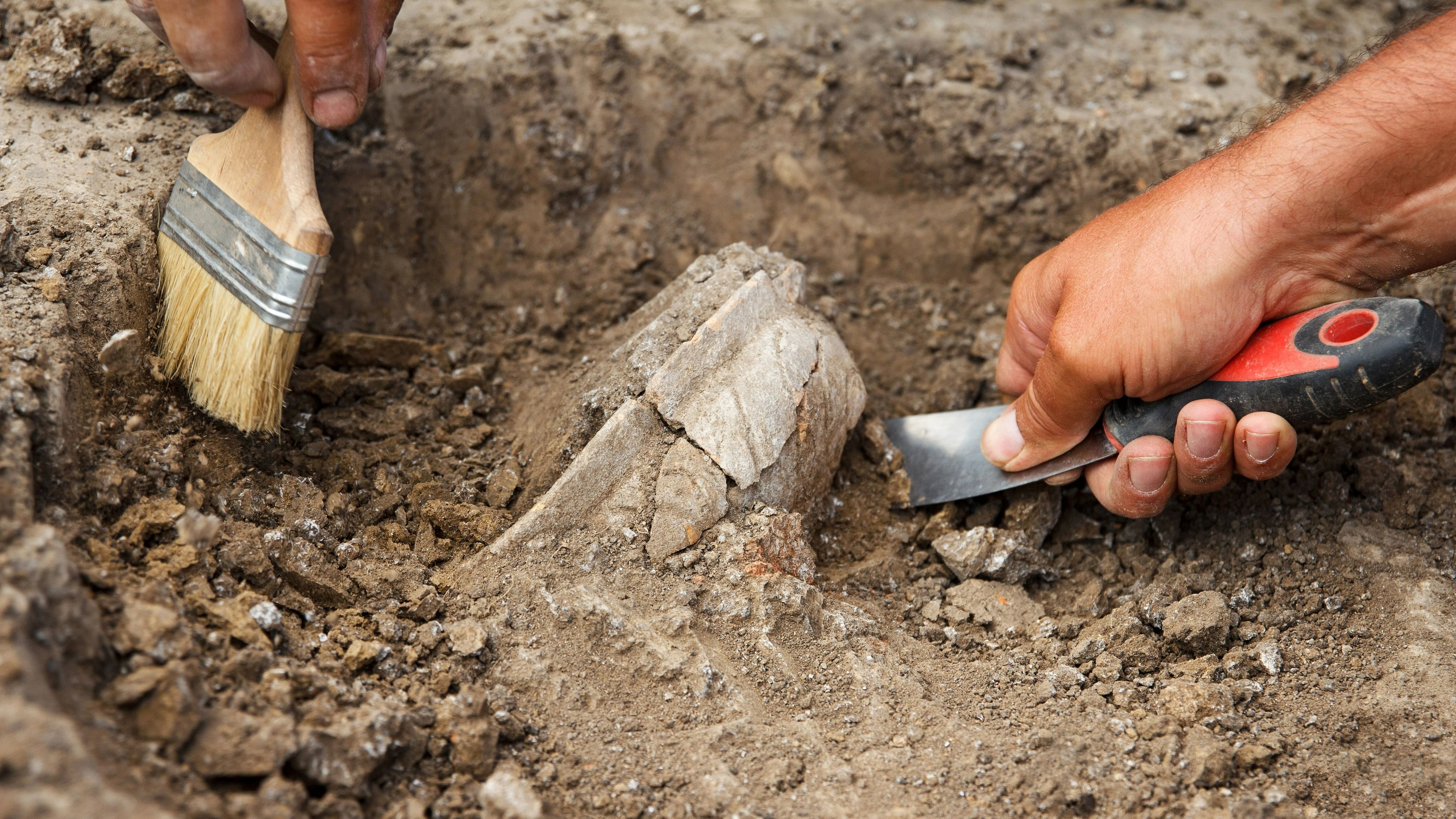
Representative image showing an archaeologist at work
Credit: iStock Photo
Kolkata: Researchers from IIT Kharagpur, Archaeological Survey of India (ASI), Physical Research Laboratory (PRL), Jawaharlal Nehru University (JNU) and Deccan College have found evidence of human settlement that is as old as 800 BCE (Before Christian Era) at Vadnagar in Gujarat.
An IIT Kharagpur statement said that the study of deep archaeological excavation at Vadnagar also indicates that the rise and fall of different kingdoms during this long 3,000 years and recurrent invasions of India by central Asian warriors were driven by severe change in climate like rainfall or droughts.
The findings have just been published in a paper titled 'Climate, human settlement, and migration in South Asia from Early historic to medieval period: evidence from new archaeological excavation at Vadnagar, Western India' in prestigious Elsevier journal 'Quaternary Science Reviews'.
While the excavation was led by ASI, the study was funded by the Directorate of Archaeology & Museums Government of Gujarat that is entrusted with building India's first experiential digital museum (experiential means the process of learning through experience) at Vadnagar.
The research at Vadnagar and Indus Valley civilisation has also been supported by funding from Sudha Murthy, former Chairperson, Infosys Foundation.
Incidentally, Vadnagar is also the native village of Narendra Modi, Prime Minister of India.
Vadnagar has been a multi-cultural and multi-religious (Buddhist, Hindu, Jain and Islamic) settlement.
"Excavation in its several deep trenches revealed the presence of seven cultural stages (periods) namely, Mauryan, Indo-Greek, Indo-Scythian or Shaka-Kshatrapas, Hindu-Solankis, Sultanate-Mughal (Islamic) to Gaekwad-British colonial rule and the city is continuing even today. One of the oldest Buddhist monasteries has been discovered during our excavation."
"We found characteristic archaeological artefacts, potteries, copper, gold, silver and iron objects and intricately designed bangles. We also found coin moulds of Greek king Appollodatus during the Indo-Greek rule at Vadnagar," said ASI archaeologist Abhijit Ambekar, co-author of the paper who led the excavation from 2016.
He claimed that our evidence makes Vadnagar the oldest living city within a single fortification unearthed so far in India. Vadnagar is unique in a sense that such a continuous record of Early historic to medieval archaeology with precise chronology has not been discovered elsewhere in India.
"Some of our recent unpublished radiocarbon dates suggest that the settlement could be as old as 1400 BCE contemporary to the very late phase of the post-urban Harappan period. If true then it suggests a cultural continuity in India for the last 5,500 years and the so-called Dark Age may be a myth," lead author of the paper and IIT professor Anindya Sarkar said.
"The earliest settlement period in Vadnagar started at least at 800 year BCE i.e. early Iron Age or questionably Late Vedic period and pre-dates both Buddhism and Jainism. This period continues into the Mauryan rule and ends with its fall around 150 year BCE. After the downfall of the Gupta Empire, large-scale de-urbanisation, drying up of water bodies, famines and population contraction across India occurred," said Sarkar.
He said during the last 2,200 years of tumultuous time of Indian history there were seven invasions from central Asia to India (including Gujarat), imprints of which can also be found in the successive cultural periods of Vadnagar.
"Our isotope data and dates of the cultural periods at Vadnagar suggest that all these invasions happened precisely when the agrarian Indian subcontinent was prosperous with stronger monsoon but the central Asia was extremely dry and uninhabitable with recurrent droughts from where almost all the invasions and migrations happened," added Sarkar.